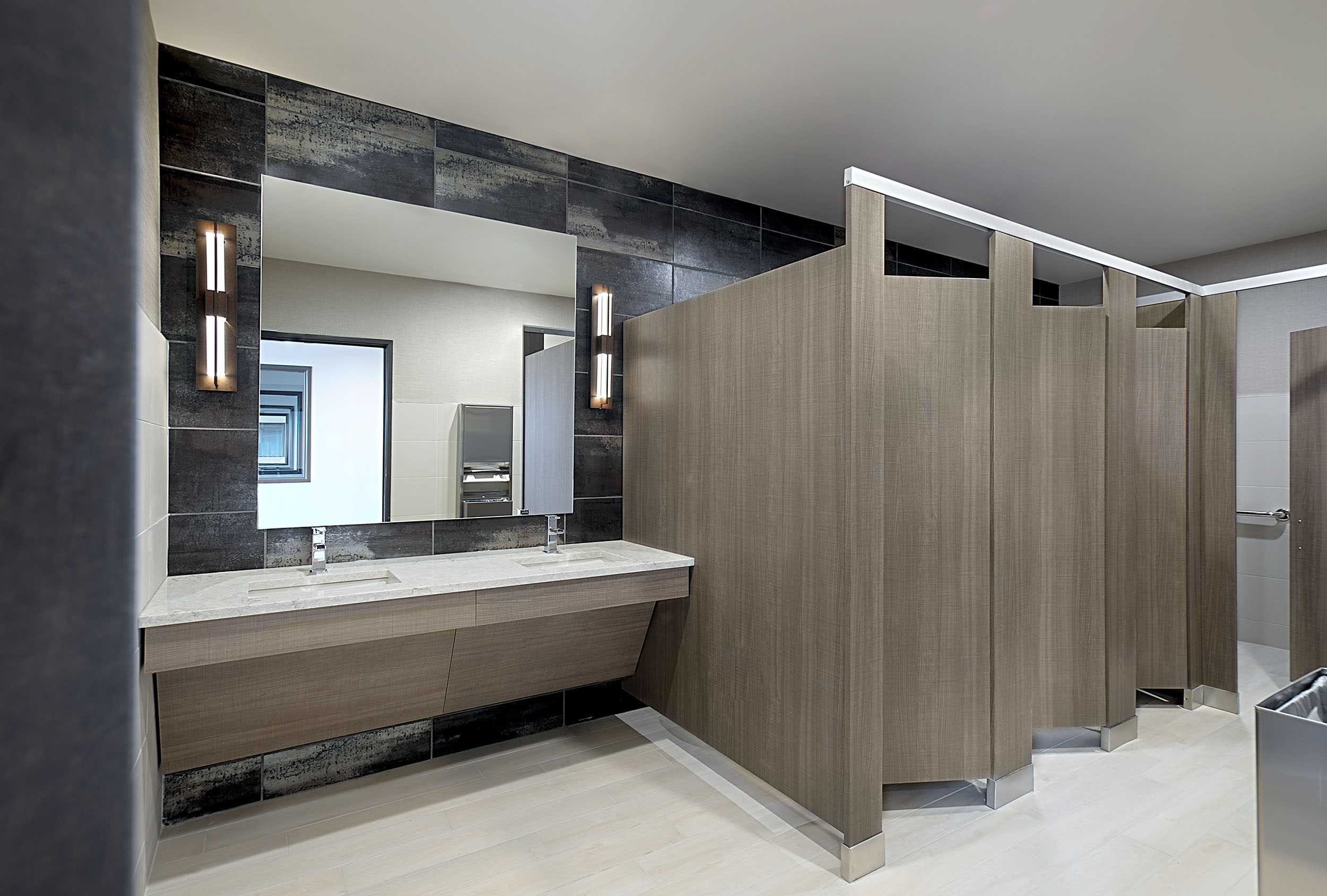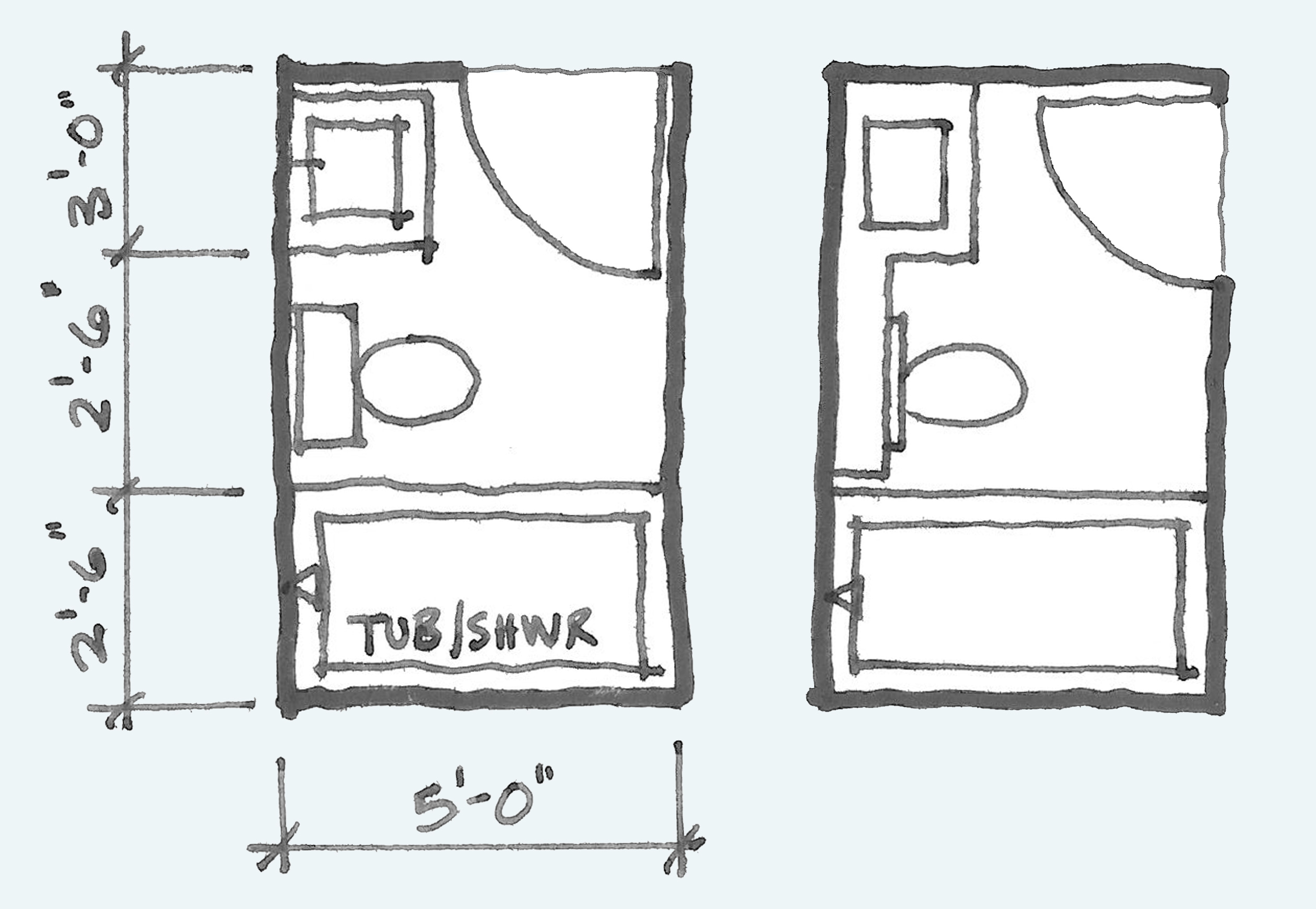Bathroom Design Considerations for Office Environments

Office bathroom design is not just about providing a basic necessity; it’s about creating a functional, accessible, and aesthetically pleasing space that contributes to a positive employee experience. A well-designed bathroom can boost morale, enhance productivity, and even improve company image.
Functionality in Office Bathroom Design
Functionality is paramount in office bathroom design. The layout and features should prioritize ease of use and efficiency. The number of fixtures and their placement must be carefully considered to ensure sufficient space and minimize waiting times, especially during peak hours.
- Stalls and Urinals: The number of stalls and urinals should be determined based on the number of employees and anticipated usage patterns. A good rule of thumb is to have one stall for every 10-15 employees, and one urinal for every 20-30 employees.
- Sinks: Adequate sink space is crucial. Consider providing both single and double-sink vanities to accommodate individual preferences.
- Mirrors: Large, well-lit mirrors are essential for personal grooming.
- Storage: Ample storage space for personal items, such as purses, briefcases, and toiletries, is important. Consider installing shelves, hooks, or cubbies.
- Waste Disposal: Provide multiple trash receptacles for different types of waste, such as paper, sanitary products, and general trash.
Accessibility in Office Bathroom Design
Accessibility is a crucial aspect of bathroom design, ensuring that the space is usable by everyone, regardless of their physical abilities. This includes compliance with the Americans with Disabilities Act (ADA) and other relevant regulations.
- ADA Compliance: Bathrooms must adhere to specific ADA requirements, including minimum doorway widths, grab bars, accessible toilets, and wheelchair-accessible sinks.
- Accessible Stalls: At least one stall should be ADA compliant, featuring a wider door, grab bars, and a lowered toilet.
- Accessible Sinks: Sinks should be designed with adjustable height and clear floor space for wheelchair users.
- Braille Signage: Clearly labeled signage, including Braille, is essential for visually impaired users.
Aesthetics in Office Bathroom Design
While functionality and accessibility are paramount, aesthetics play a significant role in creating a positive bathroom experience. A well-designed bathroom can enhance employee morale and create a more inviting environment.
- Color Palette: Neutral colors, such as white, beige, or gray, create a clean and calming atmosphere.
- Lighting: Bright, well-distributed lighting is essential for safety and visibility. Natural light, when possible, can enhance the space.
- Ventilation: Proper ventilation is crucial for removing odors and moisture. Consider using exhaust fans or windows that can be opened.
- Flooring: Non-slip, easy-to-clean flooring materials are recommended. Tile or vinyl are common choices.
- Fixtures: Modern, stylish fixtures can elevate the bathroom’s aesthetic appeal.
Layout Considerations for Office Bathrooms
The layout of an office bathroom can significantly impact its functionality and user experience. Different layouts cater to varying needs and space constraints.
- Single-User Bathrooms: These bathrooms are typically found in smaller offices and offer privacy but may be less efficient for larger teams.
- Multi-User Bathrooms: Larger offices often have multi-user bathrooms with multiple stalls and sinks. These layouts can accommodate higher traffic but may compromise privacy.
- Unisex Bathrooms: Unisex bathrooms are becoming increasingly common in modern offices, promoting inclusivity and reducing gender-based segregation.
Optimizing Space and Functionality: Office Bathroom Floor Plans

Office bathroom design is not just about aesthetics; it’s about creating a functional and efficient space that caters to the needs of employees and visitors. Optimizing space and functionality is crucial in ensuring a comfortable and productive work environment.
Maximizing Space Utilization
Incorporating strategic design elements and layout configurations can significantly maximize space utilization in office bathrooms. Different bathroom layouts cater to various office environments, including small, medium, and large-sized spaces.
- Compact Layouts for Small Offices: For small offices with limited space, a compact layout with a single toilet, sink, and mirror is ideal. This design minimizes the footprint while maintaining essential functionality. To save space, consider using wall-mounted sinks and toilets, and opt for a corner design to maximize usable floor area.
- Modular Layouts for Medium-Sized Offices: Medium-sized offices can benefit from a modular layout that offers greater flexibility and adaptability. This layout typically includes separate stalls for toilets and sinks, creating a more spacious and private experience. Modular units can be customized to accommodate different configurations, such as adding shower facilities or extra sinks, depending on the specific needs of the office.
- Open-Plan Layouts for Large Offices: Large offices often require a more open-plan layout that accommodates a higher volume of traffic. This layout can include multiple toilet stalls, sinks, and even showers, distributed strategically to minimize queuing and optimize flow. Open-plan designs can incorporate partitions or dividers to create a sense of privacy while maintaining a spacious feel.
Efficient and Functional Bathroom Layouts
Creating an efficient and functional bathroom layout involves considering various factors, including traffic flow, accessibility, and minimizing clutter.
- Optimizing Traffic Flow: Strategic placement of fixtures and doorways ensures smooth and efficient movement within the bathroom. A clear path from the entrance to the exit, with minimal obstacles, promotes ease of access and prevents congestion.
- Accessibility Considerations: Compliance with accessibility regulations is crucial for all bathrooms, regardless of size. This includes ensuring sufficient space for wheelchair users, providing grab bars, and incorporating accessible fixtures.
- Minimizing Clutter: An organized bathroom minimizes clutter and promotes a clean and welcoming atmosphere. This can be achieved by using wall-mounted dispensers for soap, hand towels, and other toiletries, and by providing adequate storage space for cleaning supplies and other necessities.
Privacy and Enhanced Bathroom Experience
Privacy is a crucial aspect of bathroom design, especially in office environments. Partitions, dividers, and other design elements can effectively create a sense of privacy and enhance the overall bathroom experience.
- Partitions and Dividers: Partitions and dividers are effective in creating separate spaces within a bathroom, providing a sense of privacy for users. They can be made from various materials, such as glass, wood, or metal, and can be customized to suit the aesthetic and functional needs of the space.
- Stalls and Cubicles: Stalls and cubicles offer a higher level of privacy, especially for toilets. They are typically enclosed structures that provide complete separation from other users.
- Lighting and Color Schemes: Lighting and color schemes can significantly impact the ambiance and feel of a bathroom. Warm, inviting lighting and soothing color palettes can create a more relaxing and private experience.
Incorporating Diverse Features, Office bathroom floor plans
Office bathrooms should cater to the diverse needs of employees and visitors. This includes incorporating a variety of features, such as showers, stalls, and sinks, to accommodate different preferences and requirements.
- Showers: Showers are becoming increasingly common in office bathrooms, especially in larger offices or those with fitness facilities. They provide a convenient and refreshing option for employees who wish to exercise or shower after work.
- Stalls: Stalls are essential for toilets, providing privacy and hygiene. They can be designed in various sizes and configurations to accommodate different needs, such as larger stalls for wheelchair users.
- Sinks: Sinks are another essential fixture in any bathroom. The number and design of sinks should be considered based on the size and traffic volume of the office.
Essential Bathroom Fixtures and Equipment

Office bathroom design involves more than just aesthetics; it’s about creating a functional and hygienic space that caters to the needs of employees. The choice of fixtures and equipment plays a crucial role in achieving this goal.
Fixture Comparison
Selecting the right fixtures can significantly impact the overall user experience and longevity of the bathroom. The following table compares various types of toilets, sinks, and other common fixtures:
| Fixture Type | Pros | Cons |
|---|---|---|
| Toilets | ||
| Dual-flush | Water conservation, lower operating costs | More complex mechanism, potential for malfunction |
| WaterSense-labeled | High water efficiency, lower water bills | May require adjustments for optimal performance |
| Elongated bowl | Enhanced comfort, increased user satisfaction | Higher water consumption compared to standard bowls |
| Sinks | ||
| Undermount | Sleek and modern design, easy to clean | Can be more expensive, requires specialized installation |
| Vessel | Unique and stylish, variety of designs | Limited counter space, potential for water splashing |
| Wall-mounted | Space-saving, creates a cleaner look | Requires specialized plumbing, potential for leaks |
| Other Fixtures | ||
| Hand dryers | Hygienic, reduces paper waste | Can be noisy, may not be effective for wet hands |
| Soap dispensers | Automatic dispensing, promotes hygiene | Requires regular maintenance, potential for clogging |
| Towel dispensers | Convenient, reduces paper waste | Can be bulky, requires regular refilling |
Durable and Easy-to-Clean Materials
Choosing durable and easy-to-clean materials is crucial for maintaining a hygienic and aesthetically pleasing bathroom environment. Consider these factors:
* Surfaces: Solid surface countertops, porcelain or ceramic tiles, and stainless steel fixtures are known for their durability and resistance to stains and scratches.
* Fixtures: Stainless steel and chrome fixtures are not only durable but also resistant to corrosion and easy to clean.
* Flooring: Non-porous materials like porcelain tile, vinyl, or epoxy flooring are ideal for high-traffic areas as they are easy to clean and resistant to moisture damage.
* Maintenance: Regular cleaning and maintenance are essential to preserve the longevity and hygiene of the bathroom fixtures.
Safety Features
Safety should be a top priority in any bathroom design, especially in office environments where a diverse population may use the facilities. Here are some essential safety features to consider:
* Handrails: Handrails near toilets and showers provide support and stability, especially for individuals with mobility limitations.
* Non-slip flooring: Textured or anti-slip flooring reduces the risk of slips and falls, particularly in wet areas.
* Emergency call buttons: Emergency call buttons in each bathroom stall allow users to summon help in case of emergencies.
* Lighting: Adequate lighting is essential for visibility and safety, particularly in areas with mirrors and showers.
Technology Enhancements
Technology can significantly enhance the functionality and user experience of office bathrooms:
* Automatic hand dryers: Automatic hand dryers offer a touchless and hygienic way to dry hands, reducing the need for paper towels and promoting cleanliness.
* Touchless faucets: Touchless faucets eliminate the need for manual contact, minimizing the spread of germs and promoting hygiene.
* Smart lighting systems: Smart lighting systems can adjust brightness levels based on the time of day and occupancy, providing optimal illumination while conserving energy.
